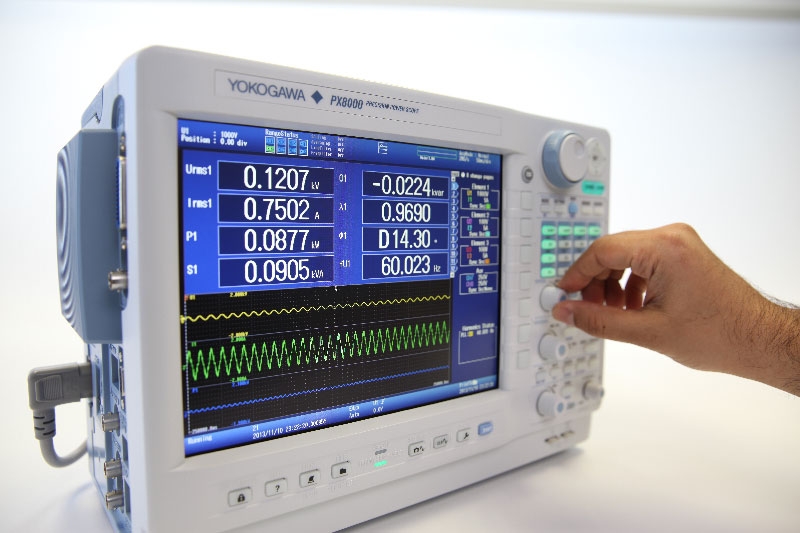Watt Circuit talks to Yokogawa at Motiv8 Forum about their PX8000 Precision Power Scope
- 11 Dec 2020
Watt Circuit recently visited the Motiv8 Forums at the Williams F1 Centre in Oxford recently where they spoke to Andy Barnes from Yokogawa about their PX8000 Precision Power Scope.
The PX8000 at a glance:
The PX8000 is the world's first precision power scope, bringing oscilloscope-style time-based measurement to the world of power analyzers. With up to four channels, it can perform standard multi-phase power measurements. These measurements exist alongside oscilloscope-specific features such as cursor-based specific time period measurements to enable analysis of waveforms with transient components.

The PX8000 precision power scope is better than traditional power measurement instruments because they cannot provide accurate time measurements; oscilloscopes are not designed to measure power. The PX8000 is the world's first precision power scope, bringing oscilloscope-style time-based measurement to the world of power measurement. It can capture voltage and current waveforms precisely, opening up applications and solutions for a huge variety of emerging power measurement problems.
Features:
- Provides simultaneous voltage and current multiplication to give real-time power sampling.
- Trend measurements between waveforms can be calculated by mathematical functions (up to four million points).
- Supports the capture of power waveforms over specific periods of time through the definition of start and stop "cursors".
- Supports X-Y axis displays as standard. It can also display lissajous waveforms of input and output for phase analysis.
- An always-active History function automatically records up to 1,000 historical waveforms.
- An accompanying PC application called PowerViewerPlus can be used to capture waveform data for further analysis.
- Features arithmetical, time-shift, FFT and other computations that enable users to display waveforms with offsets and skew corrections.
- Makes it possible to simultaneously measure the harmonic components of voltage and current waves as well as the harmonic distortion factor.
- Up to 16 different waveforms- including voltage, current and power, can be displayed side-by-side, giving engineers instant snapshots of performance.
- Supports the measurement of all power waveform parameters between precisely defined start and stop cursors.
- Built-in functions for the direct calculation of variables, such as root mean square (RMS) and mean power values, to enable the identification of cycle-by-cycle trends.
- Automatic de-skewing function eliminates offsets between current and voltage signals that may be caused by sensor or input characteristics.
- Offers industry-leading isolation performance at the highest speeds. Delivers the performance needed to develop high-efficiency inverters that operate at high voltages, large currents, and high frequency.



